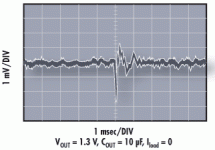Unbelievable
What is new with one or two current sensing transformers, and how is that new and not obvious?
One thing that may not be obvious is to use two transformers. But then it's a "combination" idea.
I don't understand the USPTO anymore.
What is new with one or two current sensing transformers, and how is that new and not obvious?
One thing that may not be obvious is to use two transformers. But then it's a "combination" idea.
I don't understand the USPTO anymore.
I only posted it to decipher a little marketing BS.
What's to understand? It's money driven, not based on novelty.
Anyway, a big fat corporate oinker like Intel probably patents every single resistor they use.
What's to understand? It's money driven, not based on novelty.
Anyway, a big fat corporate oinker like Intel probably patents every single resistor they use.
ok, beside marketing or not :
the "sensor" might be a simple cap, ceramics like Z5U have piezo effects, or a piezo-sensor (?);
if there is a shot in the mosfets, probably a ultra-sonic noise is generated, and with a sensor for "mechanical" noise this could be measured.
>> ever heard a triac switching? with every current pulse ( = swiching on ) a "tick" can be heard, so this could be the same in mosfet at high current.
could you measure the cap aka "sensor" ?
the "sensor" might be a simple cap, ceramics like Z5U have piezo effects, or a piezo-sensor (?);
if there is a shot in the mosfets, probably a ultra-sonic noise is generated, and with a sensor for "mechanical" noise this could be measured.
>> ever heard a triac switching? with every current pulse ( = swiching on ) a "tick" can be heard, so this could be the same in mosfet at high current.
could you measure the cap aka "sensor" ?
- Status
- Not open for further replies.
- Home
- Amplifiers
- Class D
- possible "seismic" sensor

